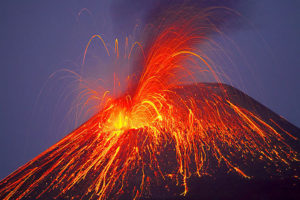 A supervolcano eruption in Yellowstone Park isn’t imminent, scientists say, but may come sooner than was previously thought. The article published by Ryan Whitwam on ExtremeTech.com Friday noted that while scientists previously thought the timeline for a catastrophic eruption would be in centuries, they now think it may be more like decades.
A supervolcano eruption in Yellowstone Park isn’t imminent, scientists say, but may come sooner than was previously thought. The article published by Ryan Whitwam on ExtremeTech.com Friday noted that while scientists previously thought the timeline for a catastrophic eruption would be in centuries, they now think it may be more like decades.
Yellowstone National Park, which touches on the states of Idaho, Montana, and Wyoming, covers the Yellowstone Caldera, a hotbed of volcanic activity. The caldera is responsible for some of the park’s unusual geothermal features, including its geysers and hot springs.
In 2013, scientists uncovered evidence that the Yellowstone Caldera was more than twice as large as was previously believed. This was good news in that an eruption is unlikely to occur until the caldera fills with magma. Scientists have debated how long it will take for the caldera to fill with magma, but recent evidence suggests the next eruption could come in the new few decades.
The volcano under what is now Yellowstone National Park has erupted three times in the previous 2.1 million years, according to fossilized ash layers uncovered by geologists. Its previous eruption, some 631,000 years ago, threw an estimated 240 cubic miles of volcanic ash, dirt, and stone into the atmosphere. The result was a 40-mile wide crater that still appears as part of the Yellowstone landscape today.
Although scientists once thought it would take centuries or millennia for the caldera to refill with magma following an eruption, recent analysis of the crystallized ash layers show that the temperature increase following an eruption took place more rapidly than predicted. This indicates that the caldera might refill with magma much more quickly than scientists had previously estimated.
Nothing can be done to prevent an eruption of the Yellowstone National Park supervolcano. However, scientists can effectively monitor volcanic activity using an extensive network of sensors and satellites. This should at least give North Americans advance warning before the next great eruption occurs.











